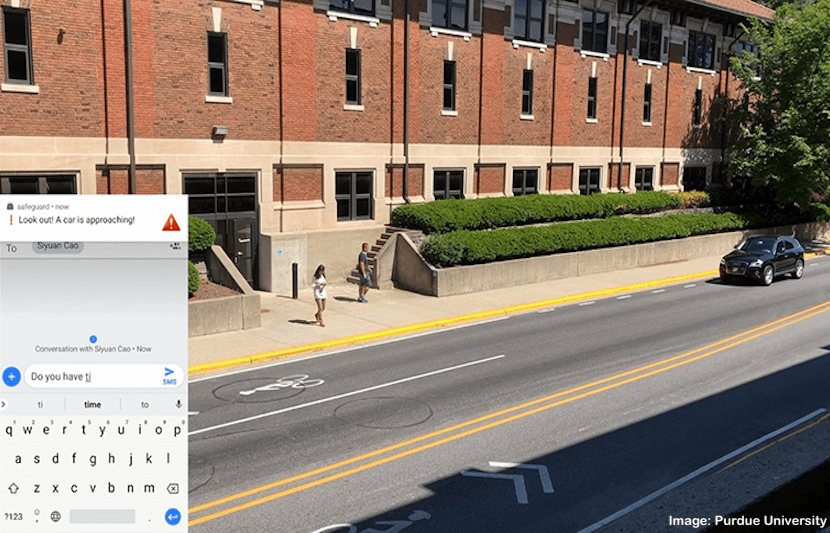Researchers at Purdue University have developed a new technology that enables public surveillance cameras to communicate with people.
The system, which they have named PHADE, can send real-time, personalized messages to smartphones based on users’ behavior, all without compromising the privacy of the individual.
This private human addressing process can be used for various purposes in locations as diverse as museums, supermarkets, and on the streets, according to the researchers.
“Surveillance cameras are widely deployed,” said He Wang, an assistant professor in the Purdue Department of Computer Science, who created the technology along with Siyuan Cao, the lead doctoral student for the project. “Human or AI systems can retrieve numerous information from the video feeds of these cameras.
“Video analytics is a killer application of edge computing. Beyond just analyzing video streams, ideally, the cameras should be able to send customized messages to a target in its view – for instance, coupons based on the target’s behavior, a security alert to a pedestrian who is too focused on the phone to be aware of approaching vehicles, etc.”
“Unfortunately,” he continued, “there is no way to do this today, because the IP address or numbers of the target’s phone are unknown to the camera.”
PHADE is specifically designed to work around this problem.
The paper describing the research will be published in the June 2018 issue of Interactive, Mobile, Wearable and Ubiquitous Technologies (IMWUT), and will be presented at an international joint conference on pervasive and ubiquitous computing (UBICOMP 2018), to be held Oct. 8-11 in Singapore.
How does PHADE work?
Traditional data transmission protocols require a destination’s IP or MAC address to send such messages.
The PHADE system, however, doesn’t require an IP address, MAC address, phone number, or face recognition to identify a person and send it a targeted message.
Rather, PHADE uses motion patterns as the address code for messages, allowing it to send the message without such information, and without violating the privacy of the recipient.
PHADE receives video streams from surveillance cameras via a server. When a person enters the camera’s view, the camera detects and tracks the person’s movement.
The camera analyzes the person’s movement and prepares a “packet” containing a message specifically designed for the person based on his or her action, as well as an address code identifying the person’s location.
The camera then broadcasts this packet, allowing it to be picked up by the smartphone at the person’s location. When the packet is received by a smartphone, the smartphone compares the address code with its sensor data and uses this information to decide whether or not to accept it.
Key features of this process ensure the privacy of the message recipients’ information.
“The system makes users’ smartphones locally decide what messages to accept,” said Cao. “It means that the clients don’t need to upload any sensor data to the server.
“PHADE also uses PCA (principal component analysis) to transform motion features into lower-dimensional address codes. This blurs details in the raw motion data and prevents targets’ walking history from being recovered.”
In experiments testing the effectiveness of this technology, PHADE was able to locate and send messages to recipients with a matching correctness rate of around 90 percent.
Using PHADE in the real world
The researchers envision PHADE being used in a variety of different settings.
It could be used to promote public safety.
“For example, the government can deploy cameras in high-crime or high-accident areas, and warn specific users about potential threats, such as suspicious followers or oncoming vehicles,” said Wang.
It could also be used in shopping malls or supermarkets, which could send coupons or notifications about sales to people based on their behavior as they shop, or in museums to send introductions to exhibits based not only on their locations but their body language.
In gyms, cameras could act as a personal trainer and provide feedback and suggestions to people as they work out.
Once PHADE makes it into the private market, the possibilities are endless.
The researchers have already been contacted by some companies interested in using PHADE.
“In the future, we may see PHADE embedded into some existing hardware or apps to extend their current functions,” said Cao. They are now working with the Purdue Office of Technology Commercialization to secure a license for their patent and will expand tests of the current system to include more people and more cameras.



